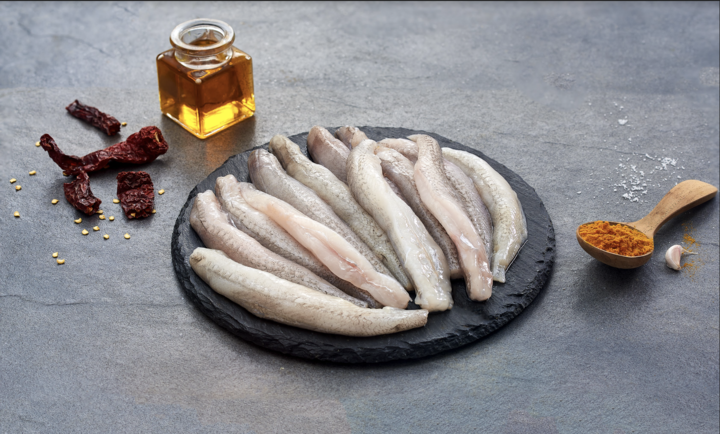What is Bombay Duck?
Is it a mutant bird? Is it an urban duck? No, it’s a marine fish from India and Bangladesh!
Distinctly unappealing in looks with a gaping jaw, this plump fish is lauded for its pungent aroma that blends in with the scent of Mumbai! Some other names for this fish are bombil, bummalo and boomla. A familiar sight on many beaches in Mumbai – neat rows of this fish hanging on racks, drying in the sun.
Why is the fish called Bombay Duck?
There are interesting stories about this. A famous one is that the name came from the British mail trains that carried this fish, along with their distinctive smell. So these wagons came to be called ‘Bombay Dak’ or ‘mail’ from Bombay. It’s possible that it could have been an Anglicization of the Marathi word for this fish, ‘bombil’.
What does Bombay Duck taste like?
Why is Bombay Duck so popular? It must be because it has a distinctive taste, and is reminiscent of the sea in every mouthful! Just one bite of dried Bombay Duck will flood your senses with the taste and feel of ocean salt. And then, as you venture further into its very fishy, very strong and very salty taste, you savour a crunchy, brittle texture that leaves the strong aftertaste of cheddar cheese on your tastebuds.
Where can one buy Bombay Duck?
During the season, from April to September, you can buy a fresh catch of Bombay Duck from Licious. We clean, prepare and pack the pieces so hygienically that they are ready to go straight into your cooking pot! We offer whole, cleaned, large medium or small Bombay Duck, as you need.
How to cook Bombay Duck
This fish is often cooked in an oven, fried or made into an aromatic curry. Parsis love fresh Bombay Duck; they coat it with rawa (semolina) and fry it till it is brown and crisp on the outside and juicy and tender inside. This delicate fish tends to crumble easily.
The popular Malwani restaurants around Mumbai have experimented with the Bombay Duck to create gastronomic experiences of extreme delight. They crisp up the fish even more by removing the water from it – making it so crisp that it disintegrates like wafers inside your mouth. When it is part of a seafood thali plate with sol kadi, chaval, rassa and chapatis, it is heaven on a platter.
It can also be eaten as a dry bombil chutney or pickle or used in other dishes like a dry bombil chilly fry.
We hope this clears up all your doubts on Bombay duck, if you decide to take the plunge and experiment with this fish, we’d love to see your creations. Tag us on Instagram with #MadeWithLicious. Happy cooking!

